Small Win #22: An umami-forward way to cook white fish fillets
A MasterChef throwback! Plus a few thoughts on umami
Welcome to Small Wins, a newsletter that shares a small win with you every other week — one that has the power to improve your cooking, your home, your life. If you’ve found your way to this newsletter but are not yet subscribed, here, let me help you with that:
I used to work in a fishmongers and one of the things I noticed was just how nervous people felt about cooking fish.
It seemed to intimidate them more than cooking meat did, and I suppose there are valid reasons for that. Fish is a very lean protein and the lower fat content means that not only do the timings have to be quite precise — overcooked fish gets very dry, very quickly — but the seasoning also needs to be spot on given its inherently subtle flavour.
But cooking fish doesn’t have to be stressful or difficult or bland — the approach shared below is an easy and accessible way to cook white fish fillets that is delicious and uses minimal ingredients. The secret is umami-rich parma ham, which delivers the fat and flavour that white fish so desperately needs.
Those of you who have been with me since my MasterChef days will recognise this as an element of one of the dishes I cooked earlier in the competition... Several years later it’s still a winner — so good yet so simple.
Love,
Alexina
Coming up on Small Wins — The easiest, best + crispiest potatoes. The best way to cook courgettes is also the simplest. Perfect meringues that don’t require you to add the sugar one slow spoonful at a time!!
For my Small Wins+ community — Most recently I wrote about the art of following a recipe and shared an ingredients substitutions tool. Next up is May’s deep-dive on the Victoria Sponge. What makes the difference between a good and great Victoria sponge? We’ll be covering cake mixing methods, the extras you can add and how to tweak a Victoria sponge in different flavour directions. I also did an experiment to see whether how much you spend on your ingredients makes a difference and I was shook by the results. Sign up to avoid missing out.
UNDERSTANDING UMAMI

Umami remains mysterious to us in a way that the other four tastes (salty, sweet, sour, bitter) do not. It’s generally accepted as denoting a savouriness in food but this is to undersell it a little: umami quietly but insistently delivers deep satisfaction. It’s nature’s ‘Mmmmmmmmmmm’ or, said another way, it brings on this sort of behaviour:
Though most strongly associated with Japan, umami is prevalent in many cuisines, including:
Italian — parma ham! parmesan! tomatoes!
American — bacon! burgers! barbecued meats!
Thai — fish sauce! shrimp paste!
And even British — Worcestershire sauce! cheddar! yeast extract!
That’s because glutamate — one of the amino acids that creates the umami flavour in food — is present in all living organisms, and thus in all animal and plant sources of protein. When we talk about MSG, we’re referring to the sodium salt of glutamic acid.
The other part of the umami equation, however, is inosinate (found in lots of meat and fish products) and guanylate (found primarily in mushrooms).1
‘Umami synergy’ refers to instances where both glutamate and isoninate or guanylate are present — either naturally (in ingredients such as nori or dried shiitakes) or purposefully, for example in Japanese dashi which is made from a combination of kombu (a dried seaweed that’s high in glutamate) and katsuobushi (smoked, fermented tuna flakes which are high in inosinate). ‘Umami synergy’ isn’t just a descriptor, it’s a force: a glutamate to inosinate ratio of 1:1 can deliver an intensity of flavour 7 to 8 times greater than tasting either substance in isolation.
This reads true to me when I think of MSG (which — to be clear — is considered safe to eat by the FDA and European Food Information Council): I love umami-rich foods, but less so MSG-rich foods. For example, in spite of finding them addictive I’ve never liked the flavour of Doritos, or Pringles, or Perello Gordal olives (even though I love corn tortillas and olives) — all of which are seasoned with MSG. But inosinate-rich cured meats, dried shiitakes and tuna? Adore those. And foods that are glutamate-rich through aging, such as parmesan, miso and soy sauce? Love those too. In theory the chemical presence of glutamate in these aged products is the same as the addition of MSG as seasoning, but the process must matter (just as it does with salt!). I was also interested to discover that MSG used to be extracted and crystallised from seaweed broth (not so different to how salt is harvested from seawater) but these days it’s produced from the fermentation of sugar beets, sugar cane and corn.
As touched on above, umami is as much a factor of time as anything else (one of the most important ingredients in the kitchen, as we’ve talked about before!). The maturation of food — whether through ripening, drying, aging or fermentation — will increase its levels of umami, presumably in part due to the concentration of flavour associated with water loss. Sundried tomatoes are much higher in umami than fresh tomatoes, for example.
Speaking of intensity, (Master)chef and food writer
recently wrote a great piece on the fifth taste which pointed out that the American take on umami is predictably “more, more, more”, using language such as “umami bombs” and taking foods that are naturally umami-rich (e.g. burgers) and upping the ante further. This got me reflecting on how much we refer to umami as a sort of blunt instrument for flavour when, in reality, it’s much more nuanced than that — and it made me realise that I needed to reframe how I thought about it!It turned out that all I needed to do was reminisce on my own experience of travelling to umami’s spiritual home, Japan. If you’ve ever been to this remarkable country (highly, highly recommend) you’ll know that meals are deep and flavourful but rarely too intense or overwhelming. Balance pervades and the food — no matter where you eat — feels clear and harmonious. We should take our cue from this approach, using umami judiciously to amplify and deepen flavour, without it becoming a crutch.
In the recipe below, a single umami-rich ingredient pulls serious weight in the flavour department, delivering deliciousness without complication — and giving a subtly flavoured piece of cod that much-needed support in return for little effort on your part… such is the power of the fifth taste!
Sources of umami
Cured meats, especially pork-based ones (pork has the highest level of inosinate amongst meats)
Soy sauce, tamari
Miso
Tomatoes — particularly in concentrated form (e.g. sundried, tomato paste)
Mushrooms — particularly dried shiitakes, but also shimeji and enoki to a lesser extent
Hard cheeses, particularly Parmesan
Seaweed (e.g. kombu, nori)
Tuna — and in particular katsuoboshi (dried fermented tuna flakes, used to make dashi)
Green tea
Anchovies (and to a much lesser extent clams)
SALTIMBOCCA-STYLE
Saltimbocca — an Italian preparation typically involving veal — means ‘to jump into the mouth’ and no wonder: it’s incredibly delicious.
One of the reasons this recipe is so brilliant is that it takes away some of the pain points of cooking fish on the hob:
The seasoning and fat are taken care of, so once you’ve made the parcels there’s very little else to do.
The parma ham crisps up easily — alleviating the stress of getting the fish skin crispy enough (the woe of many a MasterChef contestant).
The parma ham also insulates the fish from direct contact with the pan, thereby yielding a better texture and also less of a fishy smell (which is an important consideration for me!).
SALTIMBOCCA-STYLE COD
Adapted from Alastair Little’s Keep It Simple
Serves 2 — scale up or down as required
Ingredients
2 fillets of white fish — cod, haddock, coley, halibut and small fillets like red mullet work best (sea bass and bream are too big)
I don’t bother removing the skin, but you can if you like
At the fishmongers they’ll often have very big cod, and when that’s the case I like to get them to cut the fillet pretty wide (1.5-2 inches) and then I cut these in half crossways to yield two portions. It makes for a better size and shape in my opinion — see pictures below
2 slices of parma ham — this is much easier to handle when cold, so only take it out of the fridge when you’re about to use it
2 thin slices of butter, plus a generous knob for the sauce
2 sage leaves
A few spoonfuls of flour seasoned well with black pepper, plus a small pinch of salt
A generous squeeze of lemon
Method
Lay the slice of parma ham on a board and add the butter across the centre. Place the fish flesh side down on the butter, then wrap the parma ham around them to create parcels. Turn the parcels over so that the seam is underneath, then add a sage leaf to the top of each. If you can, transfer the fillets to the fridge, uncovered, for an hour or so — or feel free to cook them straightaway.
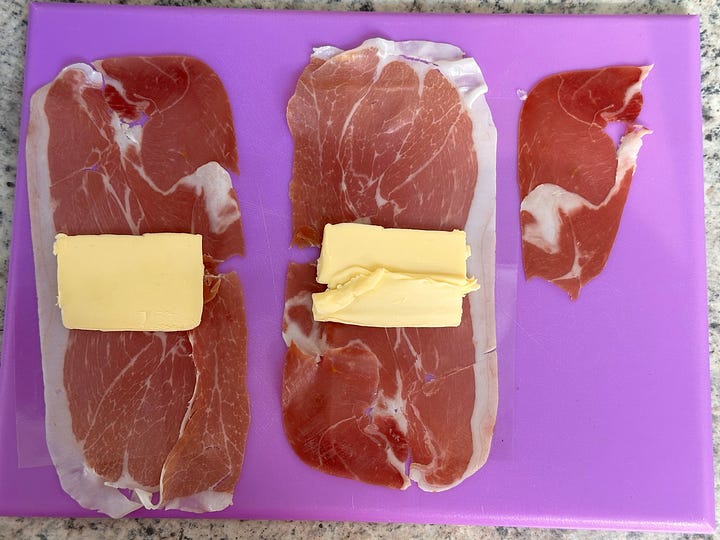
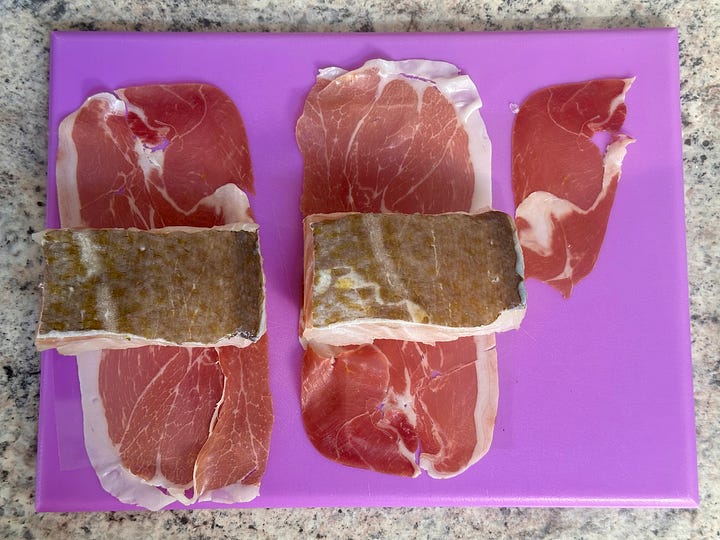
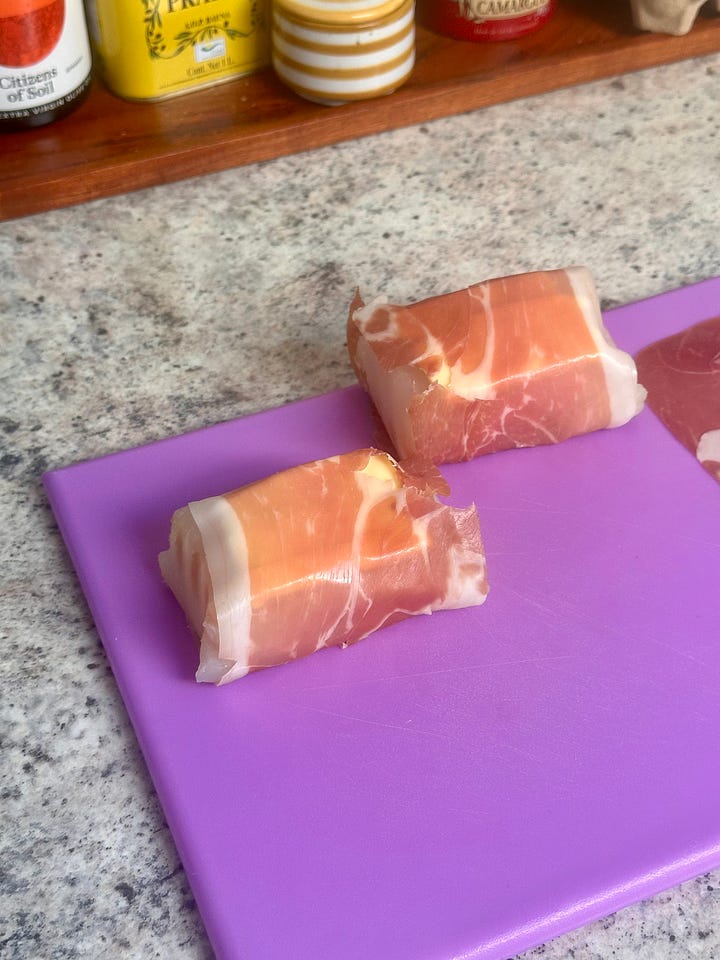

Making the parcels To cook, place a frying pan over a medium heat. Add the seasoned flour to a plate and dredge the fillets until covered on all sides, then dust off the excess. Add the fish parcels to the pan, sage leaf down. The butter will start to melt. Cook gently until the ham is crisp underneath (do not move the fillet around), 3 to 5 minutes. Carefully turn the fish over and fry the other side for a further 2 to 4 minutes. You can also briefly fry the sides if you like.
Timings will depend on the thickness of your fish, but this method is more forgiving so don’t panic!
Transfer the fillets to a plate or platter, discard the butter left in the pan (but don’t wipe it out) then add the extra knob of butter and allow it to melt and foam. Squeeze over the lemon juice, swirl the pan then pour the sauce over the fish. Serve immediately.
If cooking this for several people, try and cook all the fillets at the same time (using multiple pans on the hob), or cook in batches and keep the cooked fillets warm in a very low oven.
Make ahead: So long as your fish is very fresh, the fish parcels can be made up to a day ahead and stored in the fridge.
FURTHER READING + INFO
Tim Anderson’s piece on umami:
For excellent Japanese cooking classes, check out Yuki’s Kitchen. I’ve been to several and they’re fantastic. In-person is available if you’re based in London, or online is an option too! I particularly enjoyed learning how to make my own miso from scratch a few years ago.
Lots of information on Umami is available at Umami Information Centre (https://www.umamiinfo.com/).
Source: Umami Information Centre (https://www.umamiinfo.com/)

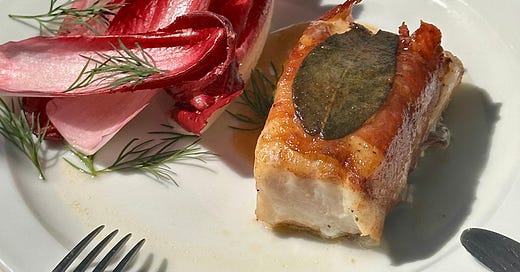



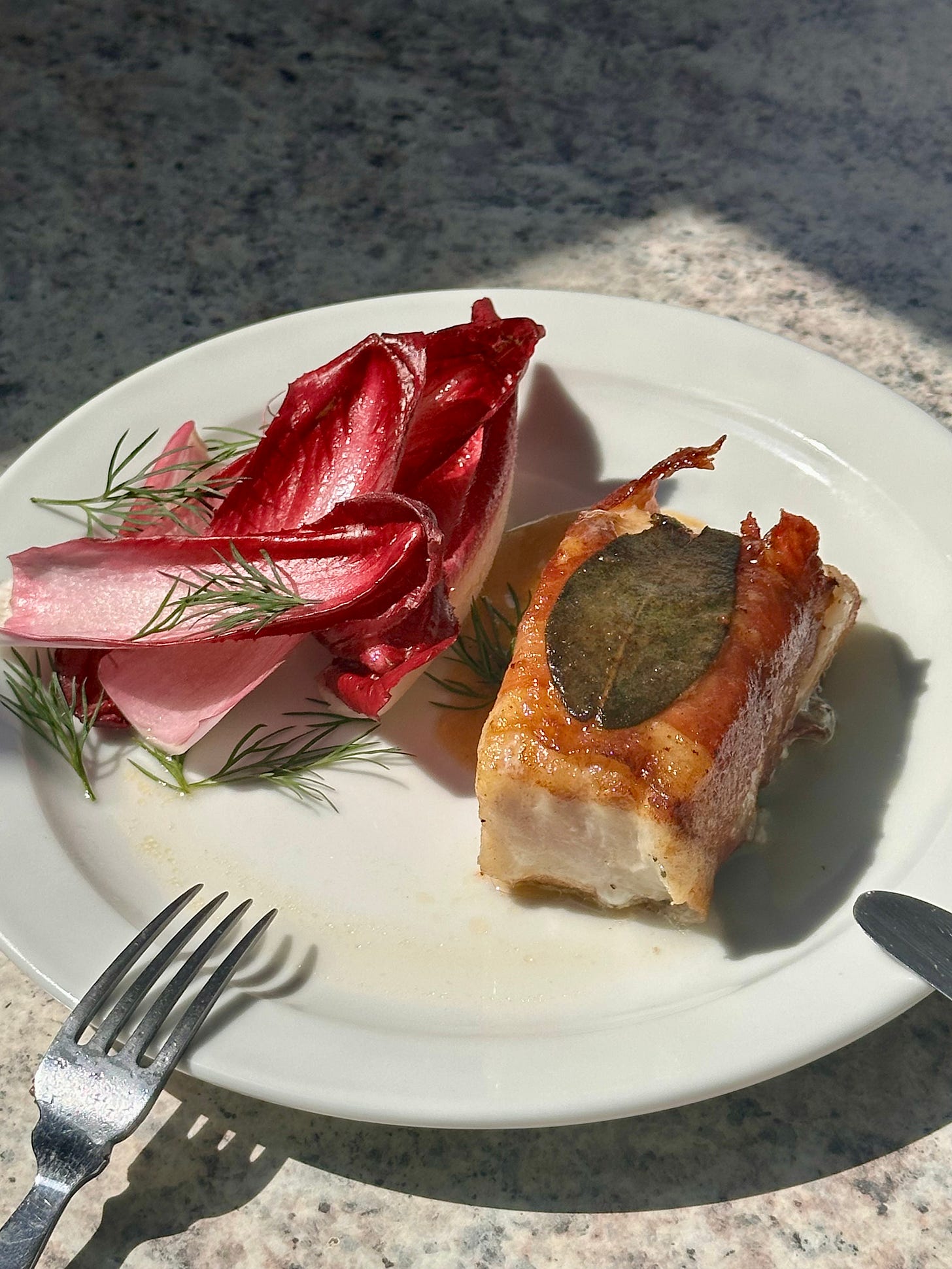
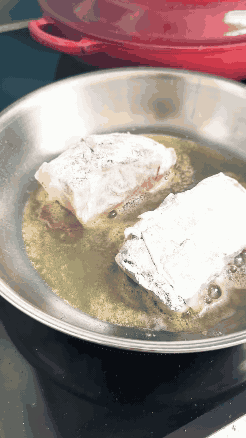


Yum! Looking forward to trying this next time the fish van does its rounds! What do you like to serve the fish with?
Thanks for the shout out! And I’m with you on Perello olives, the MSG is unnecessary and to me they’re too umami, too meaty. But I’ll take your Pringles and Doritos for sure.